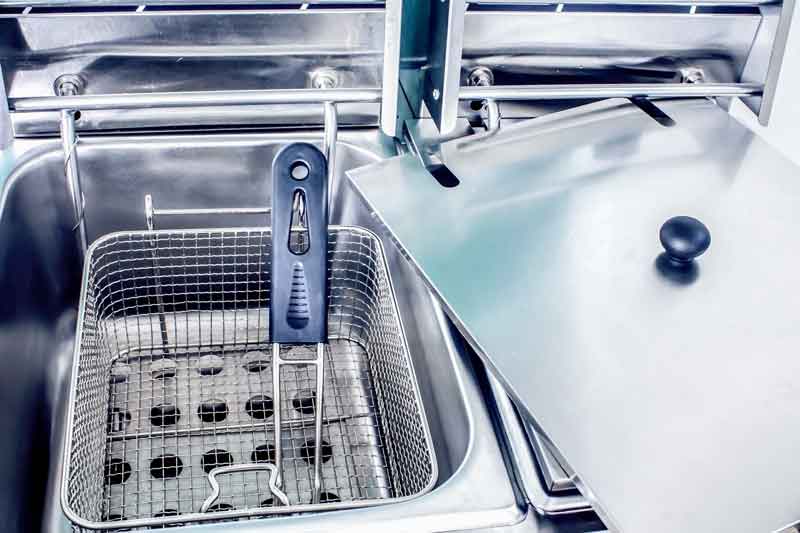Frying oil is widely used in the food service.
Monitoring and managing Frying Oil is important to guarantee consistent high food quality. Furthermore, Frying Oil has an impact on the operation costs, especially since the prices of Frying Oil have increased significantly.

1. Temperature
The set-point temperature preferably lies within a range of 160 – 175 °C (320 °F – 347 °F). Higher temperatures do not mean shorter cooking times but lead to an acceleration of frying oil deterioration (and acrylamide formation within starch containing foods).
The temperature control should be examined regularly using an external thermometer for accuracy and the temperatures should be documented in the context of a HACCP concept.
Do not overfill fry baskets, to avoid a strong temperature decrease during the start of the frying process. Modern fryer with electronic or computer control have an appropriate temperature control system which reacts fast on any temperature changes. Fryer with mechanical temperature controls may cause substantial temperature differences which can lead to a faster fat degradation.

2. Avoid salts and spices before frying
Especially salt promotes the migration of water from the inside to the surface of the food and the formation of toxic substances. Never add salt or spices over the VAT before or after the food has been cooked.

3. Shake off crumbs
Before inserting breaded foods, e. g., nuggets, chicken-fingers, schnitzel, loose crumbs should be shaken from the foods. Small parts char easily in the fryer and accelerate frying oil degradation. Especially when food is freshly breaded this is very important!
.

4. Frozen foods
Do not load fry baskets over the fryer. Ice crystals and crumbs will accelerate the oil degradation process.

5. Skim oil frequently
Maintain fryer vat free of floating debris by skimming the oil periodically. Burnt food pieces will speed up frying oil degradation.

6. Cover VAT
Covering of the fryer not in use: to protect the fat against oxygen, light, dust and other contaminants, the VAT must be covered. This prevents additional deterioration of Frying Oil by oxidation and photooxidation.

7. Filtration
Frequent filtering is the single most important thing you can do to extend the life of your frying oil. Regular filtration (min. twice a day) ensures frying oil contaminants removal which speed up oil degradation. If fresh breaded products are fried a higher frying oil filtration frequency is strongly recommended!
Increasingly, built-in filtration systems are used which clean frying oil. Active and passive filter cannot regenerate the deep-frying medium but help to slow down the frying oil degradation and extend its service-life.

8. Cleaning
After the oil degradation point has been reached (see our article “Frying Oil Quality Parameters”). Fryer is to be emptied and cleaned. Fat must be removed to avoid oxidation. Gummed deposits on the heating tubes reduce the heat transfer and should be removed. Any fat rests will promote faster fat deterioration of fresh frying oil and quality losses when the deep-frying is operating again. Important: thoroughly rinse the VAT after cleaning to ensure remaining soaps to be flushed out of the fryer.
If you want to learn more about this and other frying oil technical topics, please contact FILTROX or find out more on our frying oil filtration page










